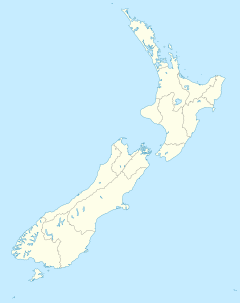Matangi, New Zealand facts for kids
Quick facts for kids
Matangi
|
|
|---|---|
|
Village
|
|
| Country | New Zealand |
| Region | Waikato |
| District | Waikato |
| Elevation | 50 m (160 ft) |
| Population
(2013 census)
|
|
| • Territorial | 2,157 |
| Time zone | UTC+12 (NZST) |
| • Summer (DST) | UTC+13 (NZDT) |
Matangi (which means Mātangi in the Māori language) is a small village in the Waikato District of New Zealand. It is located right next to the eastern edge of Hamilton, a larger city. The area around Matangi has many lifestyle blocks, which are like small farms or large properties.
In the heart of Matangi village, you'll find Matangi School, which first opened in 1910. There's also a garage, a Four Square supermarket, a takeaway shop and café, Matangi Hall, St David’s church, and the Matangi recreation reserve, which is a park for everyone to enjoy.
Contents
Who Lives in Matangi?
Here's how Matangi's population has changed over the years, according to census results:
| Year | Population | Households | Average income |
|---|---|---|---|
| 2001 | 1,557 | 489 | $22,300 |
| 2006 | 1,791 | 597 | $29,100 |
| 2013 | 2,157 | 735 | $38,200 |
What is the Land Like?
The land in Matangi is made up of special "Matangi soils." These soils formed on the edge of a swampy area called the Komakorau Bog. They also sit on flat lands made from sand and gravel left behind by the Waikato River.
Matangi's Past: A Look Back
Long ago, the area around Matangi was covered in thick native forests. These forests had tall trees like totara, mataī, rimu, kahikatea, titoki, tawa, and rewarewa. Sadly, almost all of this original forest is now gone.
Early Māori History
The local Māori people, especially the Ngāti Haua tribe, lived here for a long time. Their meeting place, called Te Iti o Hauā marae, is about 3 kilometers east of Matangi. After the New Zealand Wars in the 1860s, many of the original Māori landowners lost their land. This happened either through sales or through land confiscation, which meant the land was taken by the government.
The Railway and Dairy Factory
In 1884, a railway line opened, connecting the area. The train station was first called Tamahere, but its name changed to Matangi in 1906. This railway helped the area grow.
A creamery, which is a place where cream is separated from milk, opened in 1885. Later, cheese factories were built. In 1917, these smaller factories joined together to form a larger group. Then, in 1919, a big new dairy factory opened in Matangi. This factory was run by the New Zealand Co-operative Dairy Company Ltd. It made dried milk for a company called Glaxo. At that time, it was the largest dairy factory in New Zealand! It could process about 25,000 gallons (about 94,600 liters) of milk every day.
The factory was one of the first customers of the Central Waikato Electric Power Board in 1921, getting electricity for its operations. Around the same time, 12 homes in the village also got electricity. The Matangi dairy factory made milk powder, condensed milk, and cheese until it closed in 1987. Since the mid-2000s, the old factory has become a special place to learn about history. Other old buildings have been moved there to create a historic village square.
Community Growth and Changes
As the dairy factory grew, more railway tracks were added. The village also got a stationmaster and railway maintenance teams. In 1902, the first Matangi post office opened, and a telegram service was added in 1906. The school opened in 1910, and bulk storage buildings, train yards, and a community hall soon followed. After the dairy factory closed, the post office and telephone exchange also closed down.
More recently, rules about dividing land have become less strict. This has changed Matangi from a quiet farming community into a place where people live in the countryside but travel to Hamilton for work.
Marae: A Special Meeting Place
The local marae is called Te Iti a Hauā Marae, or sometimes Tauwhare Marae. It is a very important meeting place for several hapū (sub-tribes) of the Ngāti Hauā tribe. These include Ngāti Te Oro, Ngāti Te Rangitaupi, Ngāti Waenganui, and Ngāti Werewere. The marae is also connected to the larger Waikato Tainui tribal group. The marae includes a special meeting house called Hauā.
In October 2020, the New Zealand Government provided $734,311 from the Provincial Growth Fund. This money was given to upgrade this marae and four other Ngāti Hauā marae. This project also helped create 7 jobs for people in the area.
Education in Matangi
Matangi School is a primary school for both boys and girls. It is a state school, which means it is funded by the government. As of February 2024, the school has 190 students.



